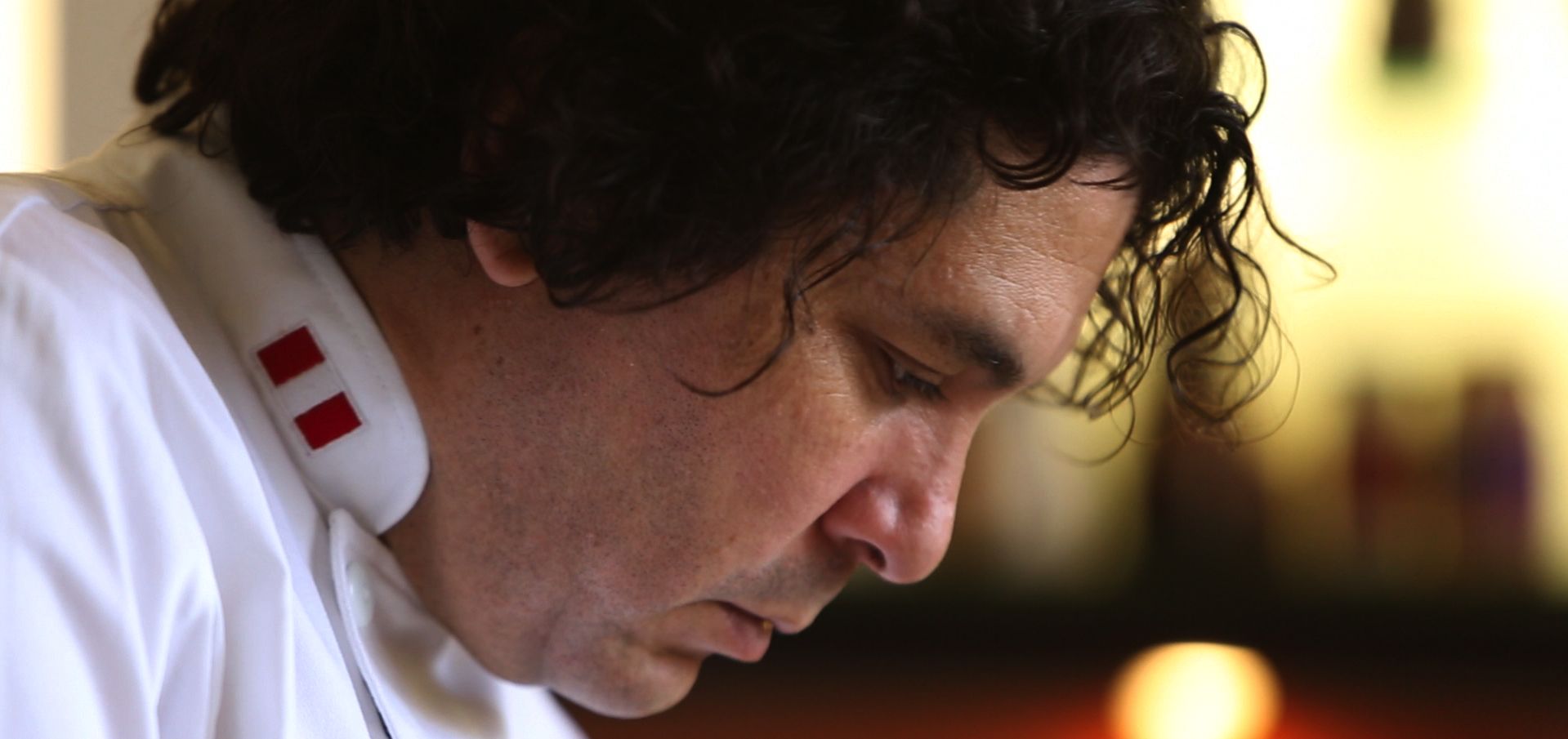
Finding Gaston is a documentary that should be one of the main crowd-pleasers of this year’s Spanish Film Festival. It contains 80 odd minutes of beautifully presented, mouth-watering food but ultimately becomes memorable due to the charisma and ethos of its titular subject – Gastón Acurio, the Peruvian celebrity chef and restaurant mogul whose flagship restaurant, Astrid y Gaston, appears annually in any list of the world’s best restaurants.
Gastón is apparently 47 years old, but between his thick flowing hair and chubby face that lights up even talking about food, he could be mistaken for someone half his age. He’s a chef whose fame has eclipsed that of a regular celebrity chef in his own country, closer to something like a national export and icon the way some superstar athletes might be. He’s the face of a national cuisine that has risen dramatically in profile over the last two decades, two facts that this documentary posits are very closely correlated to one another. And his influence is hard to dispute – his food empire is staggering, with over forty restaurants directly under his control, to say nothing of countless books, appearances and events that make up the Gastón brand. But the well-documented tangible extent of Gastón’s success and influence isn’t what director Patricia Pérez is ultimately interested in, but something less quantifiable – his unique contributions to those in Peru, someone who has helped raise national and cultural self-esteem and helped a country embrace what has always been so close to their hearts – and stomachs.
Various commentators, academics and notable figures in the documentary comment to this effect, and there are some interesting notions raised about his position in Peruvian culture. The connection between his rise to prominence and Peru coming out of a perceived economical and cultural depression are interesting, and the reinvigorating of Peruvians’ love of food as they began to embrace the cuisine more also is a fascinating aside. Some of these claims are broad and aren’t held up by facts or data or anything particularly investigative on the behalf of the filmmakers, but they give some context to the esteem in which he is held and his singular position in his native Peru. The film is most successful, however, when we deal with the subject himself.
Aside from Gastón’s charisma and self-assurance that we come to expect from a ‘celebrity chef’, the film is most compelling when revealing his principles and down-to-earth demeanour. He takes food very, very seriously – a recurring theme is how Gastón looks at his ingredients; respectful of animals that have died, and the hard work of fisherman and farmers and others that bring everything to the table. The respect and genuine love of food comes across with a remarkable sincerity, even when he criticises the work of some other chefs in the vein of a more level-headed Gordon Ramsay. And despite the admiration he earns worldwide, his humility is hard to ignore or fabricate; he addresses a group of fishermen with the same tone of respect and seriousness as a crowd of world-class restauranteurs at conferences and awards nights. He has a genuinely inspired and interesting perspective on food and the industry, and particularly valuable is his self-realisation of how inaccessible his own higher-end restaurants often are. Passionate and never complacent, he talks about food at a level above the platitudes famous chefs tend to spout, and it’s where the film is most engaging.
As I’ve hinted at, it’s not a perfect documentary. It doesn’t overstay its welcome at a trim sub-80 minutes, but as a result feels occasionally broad or lacking. Particularly conspicuous is the absence of Gastón’s long-time wife and partner (the Astrid in Astrid y Gaston) – there’s no shortage of people inspired by or admiring of our subject, but there’s no contribution from someone who knows him on a personal level which could have given this portrait a more well-rounded feel. Perhaps more alarmingly, for a film ostensibly all about Peruvian cuisine, I came out with not much of an idea of exactly what that is. Maybe that’s a presumed knowledge that I didn’t have, but a little more information on what exactly defines the Peruvian style would have grounded a lot of the film’s arguments a bit more – as it stands, I have some vague ideas, and the rest I was distracted by the fabulous looking food, even when I wasn’t sure exactly what I was looking at. But the pleasure and value in this film is seeing an absolute master and professional talking about what drives him, challenges him and his views on something he knows better than anyone else on Earth. I can recommend the film, but with one caveat – try not see it with an empty stomach.
